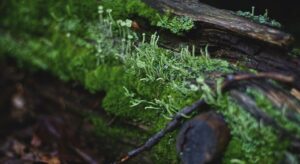Algae are mostly referred to as plants that grow in water, but the group of living organisms is much larger and includes single-celled life forms, some of which are no larger than microns in size. They can live:
- In the water column, without being attached to any object or inhabitant of the underwater world;
- near the seafloor, being attached to it and to other algae by a stratum;
- in the upper layers of the soil;
- on trees, hedges, walls of houses, etc.
Types of Algae.
Algae are distinguished by the number of cells:
- unicellular;
- Multi-cellular (mostly filamentous);
- colonial; non-cellular;
- Non-cellular.
There is also a difference in the cell structure and pigment composition of algae. In this regard, a distinction is made between:
- green (with a green tone of color and slight flecks of yellow);
- blue-green (with pigments of green, blue, red and yellow tint);
- brown (with green and brown pigments);
- red (with pigments of different shades of red);
- yellow-green (with coloring of corresponding shades, as well as two flagella of different structure and length);
- golden-colored (with pigments forming a golden color, and cells without shell or enclosed in a dense shell)
- diatoms (with a strong shell consisting of two halves and a reddish coloration);
- pyrrophytes (brownish-yellow with naked or carapace-covered cells);
- and euglena algae (unicellular, glabrous, with one or two flagella).
Algae reproduce in several ways:
vegetative (simple division of the body cells of an organism);
Sexually (fusion of the sex cells of a plant to form a zygote);
Asexual (zoospores).
Depending on the algae species and how favorable the environmental conditions are, the number of generations in just a few years can exceed 1000.
Influence of algae on the environment
All algae species form oxygen due to the presence of chlorophyll in their cells. It makes up 30 to 50% of the oxygen produced by plants on Earth. Producing oxygen, algae absorb carbon dioxide, the percentage of which in the atmosphere today is quite high.
Algae are also a source of food for many other living creatures. They feed on mollusks, crustaceans, different kinds of fish. Their high adaptability to harsh conditions provides plants and animals high in the mountains, in the polar regions, etc. with quality food.
If there are too many algae in water bodies, the water begins to bloom. Some of them, such as blue-green algae, actively secrete a toxic substance during this period. Its concentration is particularly high near the water surface. Gradually it leads to the death of aquatic life and significant deterioration of water quality, up to waterlogging.
The significance of algae for people
Algae benefit not only flora and fauna. Mankind also actively uses them. The life activity of organisms in the past has become a source of minerals for the modern generation, the list of which includes oil shale and limestone.
Algae that are edible for humans are consumed as food. They enrich organism with useful microelements and are the source of iodine.
A number of algae are actively used for water purification in artificial closed systems, such as aquariums.


